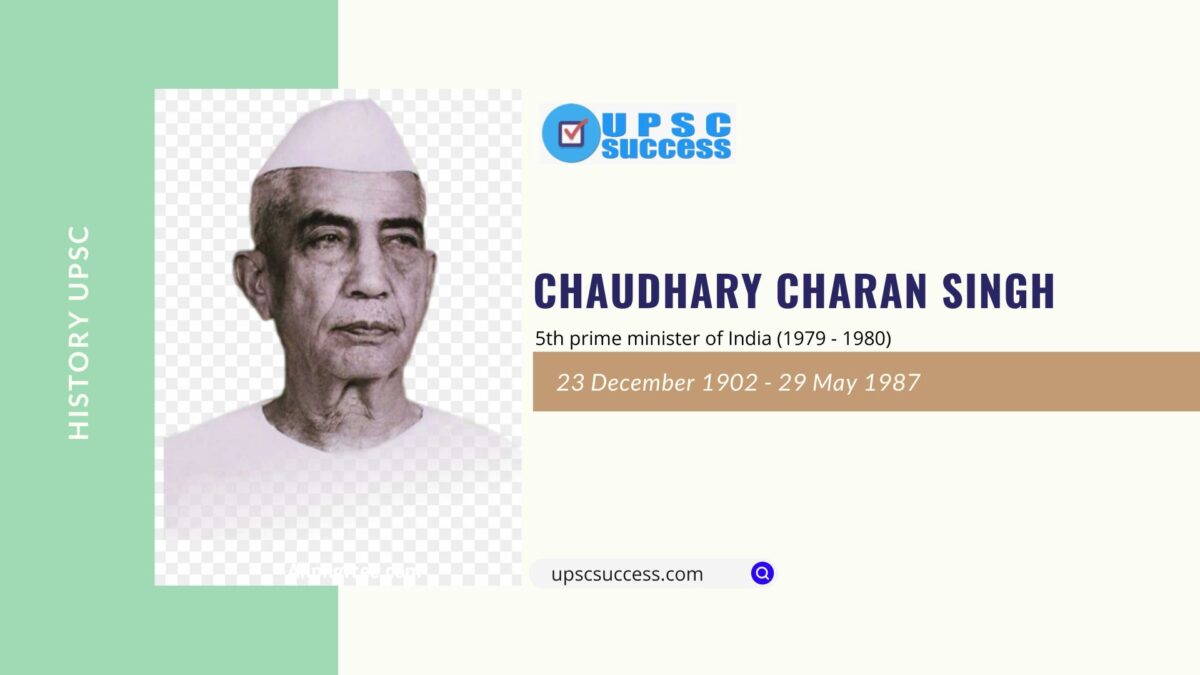Chaudhary Charan Singh, the 5th Prime Minister of India, posthumously received the Bharat Ratna, the country’s highest civilian award, on February 9, 2024. This recognition highlights his significant contributions for his pro-farmer policies.
Early Life and Political Career:
- Born in 1902 in Meerut, Uttar Pradesh.
- Active in politics from a young age, joining the Indian National Congress.
- Held various ministerial positions in Uttar Pradesh after independence.
- Chief Minister of Uttar Pradesh for five terms, known for his pro-farmer policies.
- Founded the Lok Dal party in 1974, focusing on rural development and farmers’ welfare.
Key Achievements:
- Championed land reforms and advocated for small and marginal farmers.
- Introduced progressive schemes like debt relief and minimum support prices.
- Promoted cooperative movements and rural infrastructure development.
- Served as Prime Minister of India from 1979 to 1980.
- Revered as a leader who understood the concerns of rural India and fought for their upliftment.
Chaudhary Charan Singh, often referred to as the “champion of farmers,” held significant influence on rural India through his policies and vision.
Agrarian Issues:
- Land Reforms: Singh spearheaded land reforms in Uttar Pradesh, abolishing the zamindari system and implementing ceiling limits on landholdings. This aimed to empower small farmers and reduce agrarian inequalities.
- Minimum Support Prices (MSPs): He advocated for MSPs to ensure fair returns for farmers and alleviate their financial vulnerabilities.
- Cooperative Movement: Singh promoted cooperatives as a means to facilitate collective bargaining, access to inputs, and marketing opportunities for farmers.
Farmer Welfare:
- Debt Relief: He introduced schemes like the Debt Redemption Bill (1939) to alleviate the debt burden of farmers, helping them escape exploitative cycles.
- Credit Availability: He pushed for expanding rural credit infrastructure through institutions like NABARD to improve farmers’ access to finance.
- Rural Infrastructure Development: Singh emphasized investments in irrigation, electrification, and transportation facilities to enhance agricultural productivity and connect rural areas to markets.
Rural Development Strategies:
- Decentralization: He emphasized decentralization and Panchayati Raj institutions to empower rural communities and enable local participation in development initiatives.
- Focus on Cottage Industries: Singh advocated for promoting small-scale, village-based industries to generate rural employment and income diversification.
- Self-Sufficiency: He championed policies aimed at achieving self-sufficiency in food production and reducing dependence on external sources.
Analyzing His Legacy for Contemporary Challenges:
- Relevance of Agrarian Reforms: Assessing the effectiveness of past land reforms and considering potential modifications needed in the current context to address issues like land fragmentation and farmer distress.
- Sustainable Agriculture: Evaluating the efficacy of existing MSPs and exploring alternative mechanisms to ensure agricultural sustainability and farmer income security.
- Rural Development Models: Analyzing the successes and limitations of Singh’s development strategies and their applicability to address contemporary challenges like rural migration, unemployment, and infrastructural gaps.

